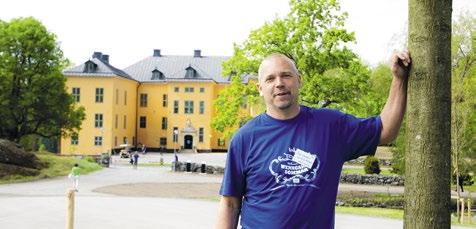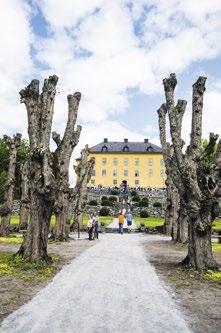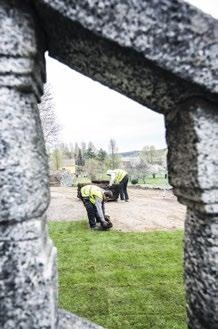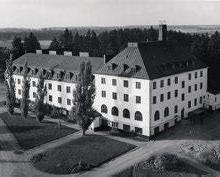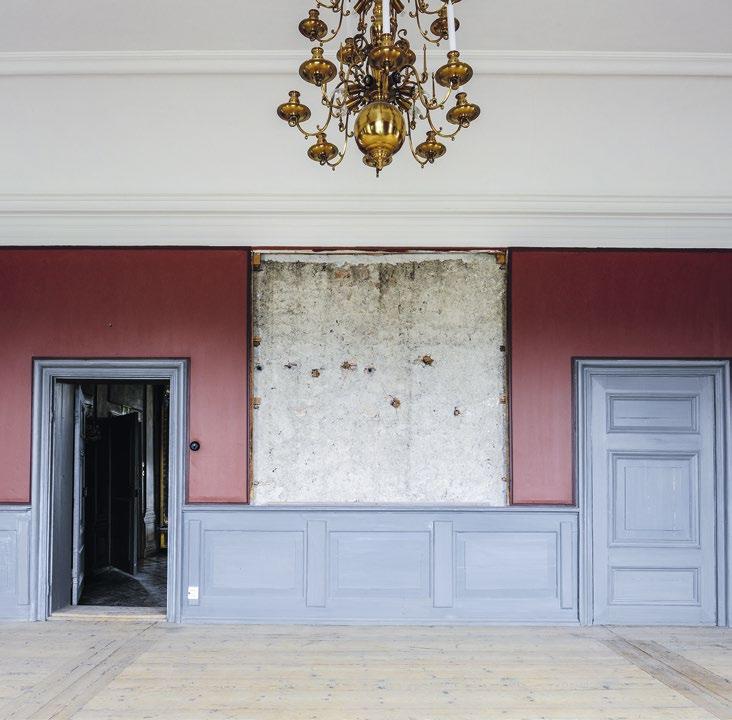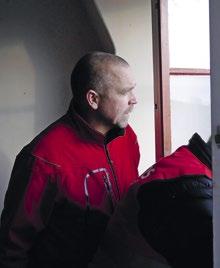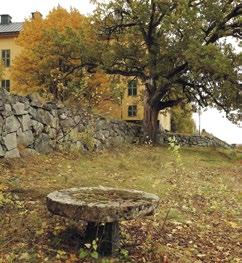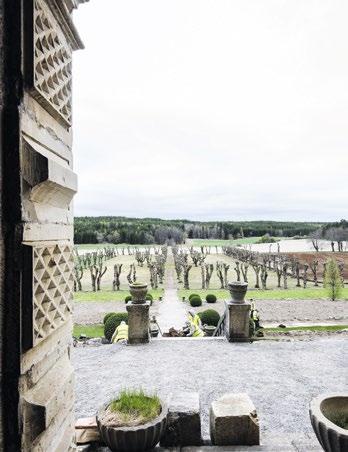
4 minute read
Wenngarn – a history crammed with curiosities
Wenngarn is a magical site that deserves the utmost attention. The first time I came to Wenngarn in 2009 I fell in love. Beyond the misuse and dilapidation I caught a glimpse of one of Sweden’s most beautiful places. It is a privilege to get to take on such a challenge and this book accounts for the 280 days from the 1st of October 2013 to the 1st of June 2014 when Sisyfos re-established Wenngarn. Wenngarn consisted in 2013 of 70 buildings, 26 000 square meters, real estate and premises of over 35 hectare of land. The aptly positioning between Stockholm and Uppsala, just 15 kilometres from Arlanda and within walking distance from Sigtuna, was a vital condition for the project.
Here at Wenngarn there are remnants of thousand years worth of history. Times that occupy both highs and lows. The oldest preserved letter in Sweden concerns a shift in heritage for the areas of Viby/Wenngarn and the centuries has left its toll. The Vasa-family lived here and there are grimy stories of murders and ghosts from the turbulent 16th century.
Advertisement
Magnus Gabriel De la Gardie entered the stage during the period that is known in Swedish history as the era of great power (Swedish-Stormaktstiden), in the middle of the 17th century and he quickly became a powerful and wealthy person. He was one of Queen Kristinas favourites. With the following words “I give to thee that, which I myself can not own” she gave away De la Gardie as husband to her beloved cousin Maria Eufrosyne (the sister of Karl X’s, who would succeed Kristina on the throne) 1647. Magnus Gabriel left this earthly life in 1686 at the Wenngarn castle after having been robbed of
1 Return to the Crown of the fiefs that had been granted to the Swedish nobility
his honour and worldly possessions, alone and impoverished after the reduction1 of Karl XI’s, in his bed in the room now known as the wedding suite. I still to this day feel a tingling sensation as I enter this room.
There are many unique environments at Wenngarn from this period: the magnificent baroque gardens, the chapel, the stone terrace and the vast avenues. These are some of the features worth seeing created by the architect Jean De la Vallé and have brought joy to visitors in hundreds of years and will so continue to bring joy in the future.
During the centuries up until recent time the aristocratic families succeed each other and the area has up until the 20th century had an important position for the Swedish political elite.
The history of Wenngarn takes a dramatic turn when the Governmental Institute for Alcoholics was opened here in 1916. An outstanding asylum building, drawn by David Lundegård, which surpasses the castle in splendour and sets the starting point for a new era at Wenngarn. The castle becomes degraded to administrative tasks, housing for the superintendent of the institute, post office, school et cetera. Statens Fastighetsverk, the public institute for real estate, formed an entire society designed for the treatment of alcoholics. The “geezers”(gubbarna in Swedish), as the intakes were called, were put to work hard with farming in an attempt to cure them of their sickness. After three to six months they were discharged and got to return home just to find themselves all too often back on the bottle again. The frequency of relapsing was as high as 95 per cent. The nickname TORKEN, the dryer, was a more apt one than labelling it “treatment” since the geezers managed to dry up and rest a few months before they continued their ordinary routine of heavy addiction.
After Wenngarn was sold in 1983 to the Levi-Pethrus foundation, a Pentecostal subsidiary, the rehabilitation program continued but in a different, more successful shape with focus on families as a whole. Sadly, the establishment was big and difficult to run; hence it was forced into bankruptcy in 1997. Wenngarn was later sold at an executive auction and the buyer’s plans to transform Wenngarn into a spa following German traditions never came further than the planning stage.
The last ten years is a dark period in the history of Wenngarn. Those who could not fit into “ordinary” society were left to their own fate here, which gradually deteriorated without either governmental supervision or political support.
During my whole career as an entrepreneur I have worked with property refinement, that is; to not alter the basic atmosphere, but to preserve the character, to communicate it’s history and to pay respect for those who have lived, worked and had their livelihood within the properties. For a refiner of properties Wenngarn is an ideal project with unique history, enchanting buildings and exciting surroundings.
The vision is to rebuild the village community Wenngarn around the castle, the metaphorical heart of the area. It is a great resource for the residents, companies and visitors to gather around. Our five core values for that journey are refine, openness, overall view, participation and passion. Each and one of the core values build upon determination from all involved. The eight months between 1st of October till the 1st of June, during which the Sisyfos project took place, is what this book is about.
In June a new phase commenced in the project Wenngarnsummer 2014 – which is going on as I am writing – a summer filled of activities from the 1st of June to the end of August. We turn a new leaf and reveal what Wenngarn has to offer its visitors, residents and workers. We kindly invite you to reflect upon what Wenngarn can add and contribute to make Sigtuna even better.
For the future we hope to create a modern village community that is built upon the needs and conditions of the residents. This vision can only come to fruition together with all those who has been involved in Wenngarn.
Olle Larsson, owner of Sisyfosgruppen (the Sisyfos group)

